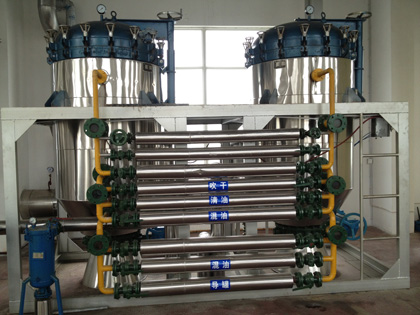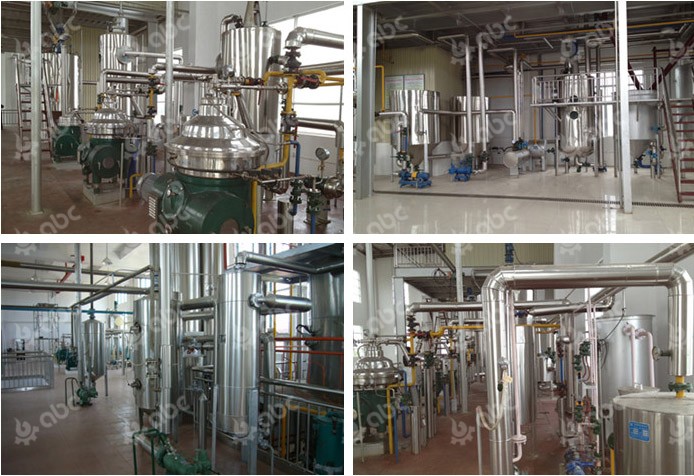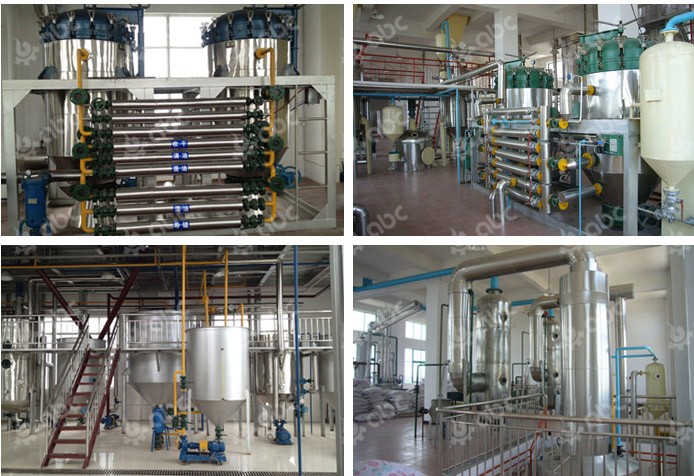Project Description
Continuous type oil refining is a large scale of oil refining method for edible oil production. In general, continuous type oil refining plant is recommended against the batch refining for higher capacity plants above 30 tons per day and for oils containing higher FFA content. For the differences of manufacturing processes, continuous oil refining process line is a little more expensive than batch oil refining process, but it can provide superior quality refined oil along with automation system and low processing cost. Two processes have been developed for continuous refining of edible oils: chemical refining and physical refining.

Physical Method Oil Refining
Physical oil refining method can remove the FFA(free fatty acids) in single stage of deodorization process while the gum content from the crude oil is removed in the degumming process. In physical oil refining process, comparatively more FFA is distilled out giving a high oil refining rate with minimum oil loss. For example, there is no need to go for alkali refining for palm oil.
Features and Advantages of Physical Oil Refining
- Simple operation
- Process control is accurately monitored through instrumentation.
- Precise control of all parameters i.e. temperature, flowrate, vacuum, residence time
- Lowest Energy Cost due to most efficient heat recovery system
- The oil fully contacting with the decolorant can improve the decolorization efficiency and reduce the usage of decolorant;
- The continuous and uniform material flows will balance the decoloring time and avoid the recovery of grease oxidation and acid value.
- The continuous airtight efficient filtration equipment has realized the automation of cake discharge and reduced the labor intensity.
- Specially designed on line oil seperator from fatty acid distillates ensures lowest neutral oil losses.
Chemical Method Oil Refining
Chemical oil refining is most widely used method for refining all types of crude oils. Chemical method of refining is accepted when the Free Fatty Acids is high; it removes the Free Fatty Acids and other impurities in a chemical way by Acid-Base neutralization process. Caustic soda is used as a base for this method. The addition of Caustic Soda to the acid completes the neutralization. This results in the formation of soapstock and gums which are then separated by Separators & Centrifuges. The neutralized oil is subsequently bleached and deodorized.
Features and Advantages of Chemical Oil Refining
- Low maintenance cost
- Process control is accurately monitored through instrumentation.
- Precise control of all parameters i.e. temperature, flowrate, vacuum, residence time
- Lowest Energy cost due to most efficient heat recovery system
- The oil fully contacting with the decolorant can improve the decolorization efficiency and reduce the usage of decolorant;
- The continuous and uniform material flows will balance the decoloring time and avoid the recovery of grease oxidation and acid value.
- The continuous airtight efficient filtration equipment has realized the automation of cake discharge and reduced the labor intensity.
Samples of Continuous oil refining plant projects




